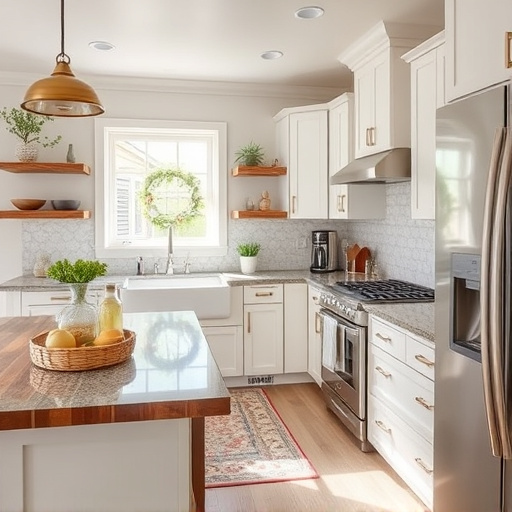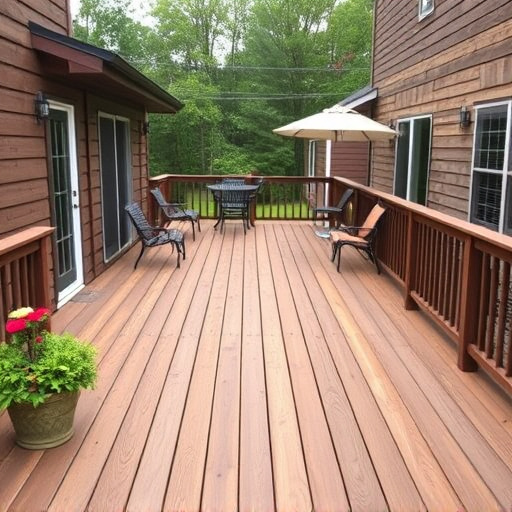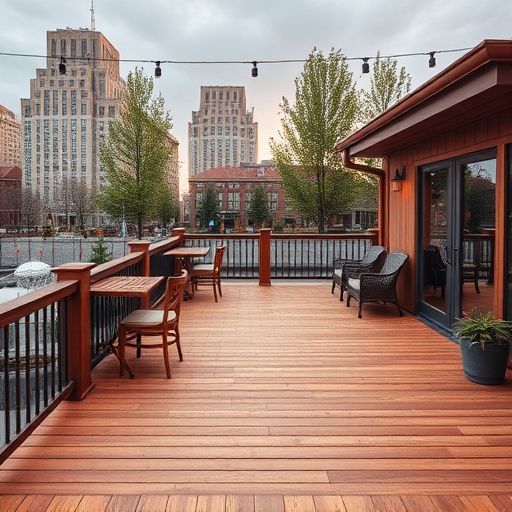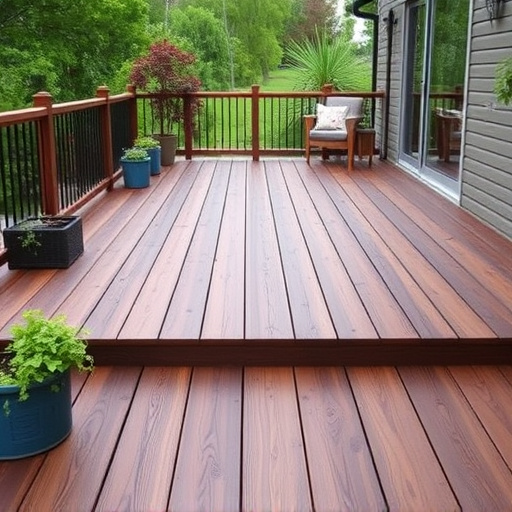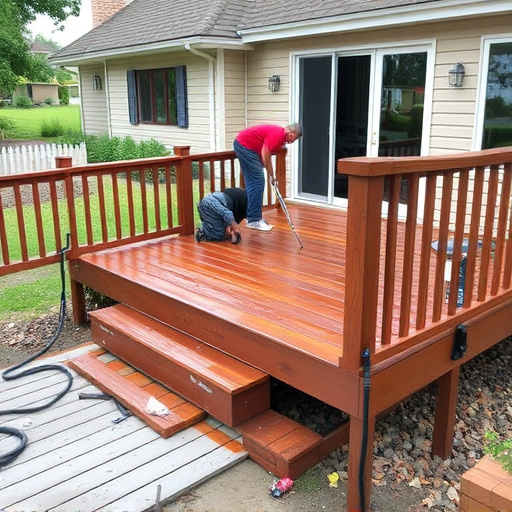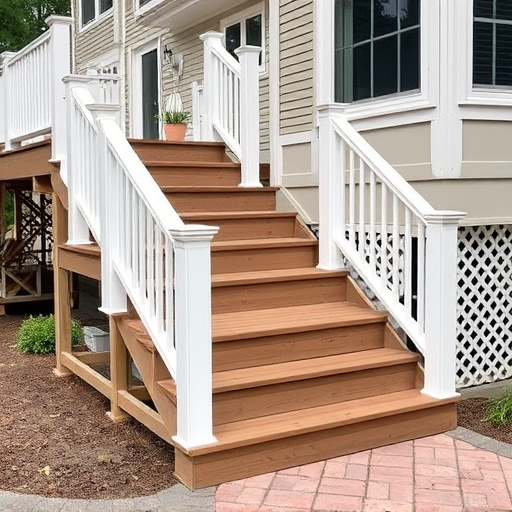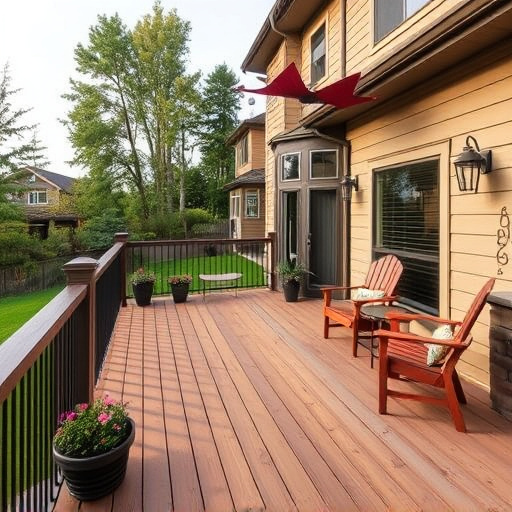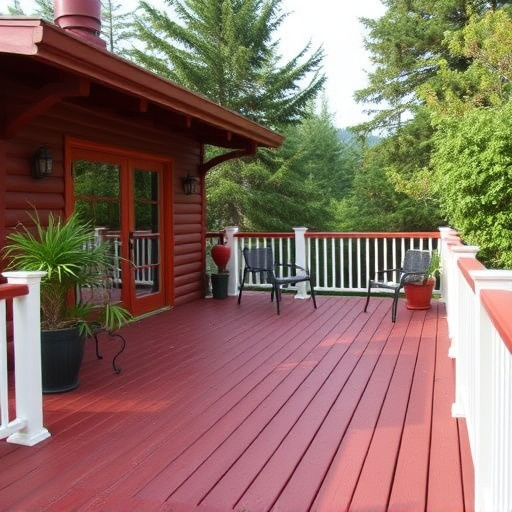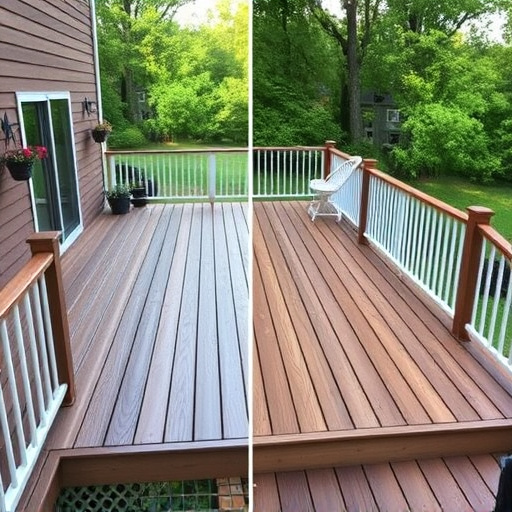A raised deck expands living space with stunning views but requires heightened awareness of structural risks compared to level surfaces. Key maintenance steps include regular inspection, securing fasteners, replacing worn materials, and preventing water penetration to avoid rot and mold. Prompt action ensures the safety and longevity of a raised deck. Conduct thorough inspections for hazards, ensure railings are secure, and maintain clear navigation paths for safe enjoyment. Engage professionals for inspections and services to prioritize structural integrity and fall prevention, enhancing outdoor living securely.
Raised decks add beauty and functionality to any home, but they also come with unique safety considerations. This guide equips homeowners with essential knowledge to navigate the risks associated with raised decks. From identifying potential hazards like loose boards and rot to implementing critical safety measures such as handrails, non-slip surfaces, and adequate lighting, we cover it all. Additionally, learn about proactive maintenance routines to ensure your deck remains a safe and enjoyable space for years to come.
- Understanding The Risks Of Raised Decks
- – Identifying potential hazards
- – Common safety concerns for raised decks
Understanding The Risks Of Raised Decks
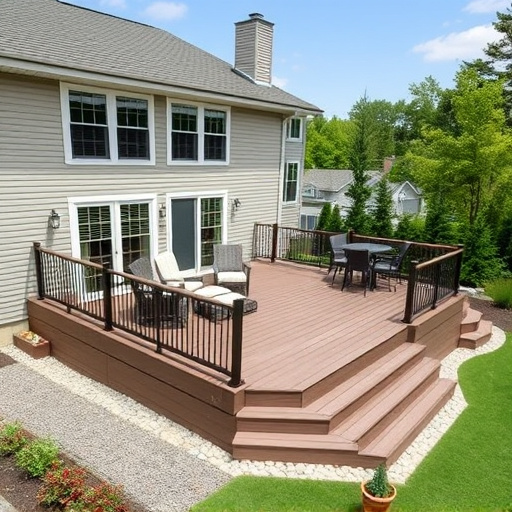
Raised decks offer a delightful extension to any home, providing outdoor living spaces and stunning views. However, understanding the risks associated with these structures is paramount for homeowners. Unlike traditional levels surfaces, raised decks are more susceptible to various hazards, from weather-related issues like strong winds and heavy rainfall, which can cause structural damage or loose boards, to pest infestations that can weaken the wood over time. Regular inspection and maintenance are crucial to mitigate these risks.
One of the most significant concerns for raised decks is storm damage repair. High winds and intense storms can rip boards off, snap supports, or even uplift the deck’s entire structure. Homeowners should be prepared with regular upkeep, including securing loose fasteners and replacing worn-out materials. Additionally, siding services are vital to protect the deck from water penetration, which can lead to rot and mold. By addressing these issues promptly, homeowners can ensure their raised decks remain safe and structurally sound for years to come.
– Identifying potential hazards
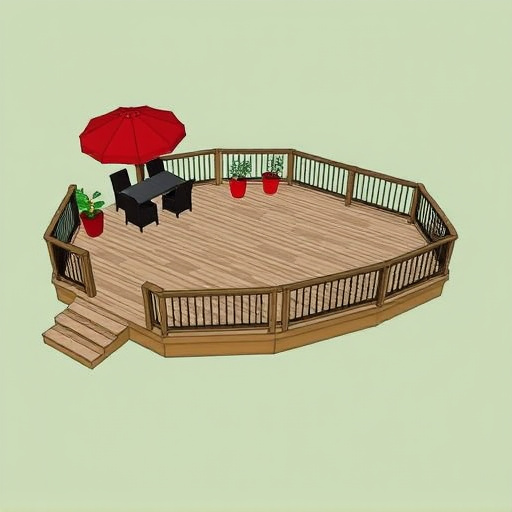
Before you start enjoying your raised deck, it’s crucial to conduct a thorough inspection to identify potential hazards. A raised deck, especially if it’s older, can harbor various safety risks that might not be immediately apparent. Look out for loose or rotten wooden boards, which could give way underfoot and cause trips or falls. Check the integrity of the joists and beams supporting the deck; any signs of decay or damage necessitate immediate repair to prevent structural failures. Additionally, examine the surrounding area for obstacles like low-hanging branches or uneven ground that could pose a tripping hazard.
Don’t overlook the importance of checking the condition of railings and guardrails. These safety features must be securely attached and free from any gaps or loose connections. Regularly inspect these elements, especially after harsh weather conditions, to ensure they remain sturdy and reliable. Furthermore, consider the deck’s overall layout and design; poorly planned or obstructed pathways can create a challenging and potentially dangerous navigation experience. Prioritizing safety during initial setup and regular maintenance is key in ensuring a secure and enjoyable raised deck experience for you and your family.
– Common safety concerns for raised decks
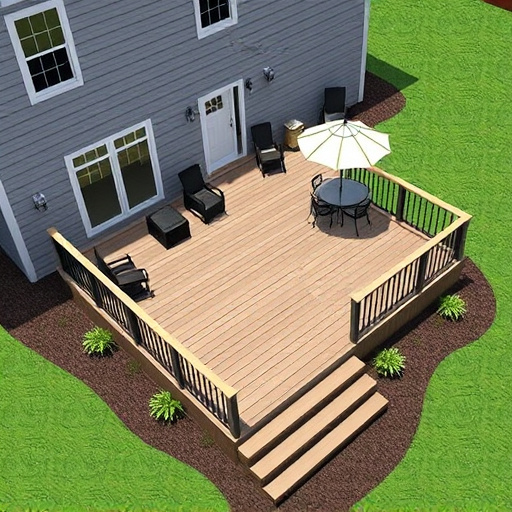
Raised decks offer a great outdoor living space, but they also come with specific safety considerations that homeowners should be aware of. Common safety concerns include structural integrity, especially around the connections between the deck and the house or any supporting structures. Regular inspection is crucial to ensure that all components remain secure and stable, preventing accidents from loose railings, warped boards, or weakened joists.
Another critical aspect is fall prevention, as raised decks can pose a higher risk due to their elevated position. Using proper handrails along all sides of the deck, ensuring they meet minimum height requirements, is essential. Regular maintenance, including tightening hardware and replacing worn-out parts, like rotted boards or corroded fastenings, is vital to keeping your raised deck safe. Engaging a professional roof consulting service for regular inspections and home service solutions can be invaluable in addressing these safety concerns and ensuring the longevity of your outdoor space while providing peace of mind.
Raising the bar on safety is essential for any homeowner with a raised deck. By understanding the potential risks and common safety concerns, you can create a secure outdoor living space that’s both enjoyable and hazard-free. Implement these tips to ensure your raised deck is a safe haven for all, providing peace of mind while you relax and entertain.





